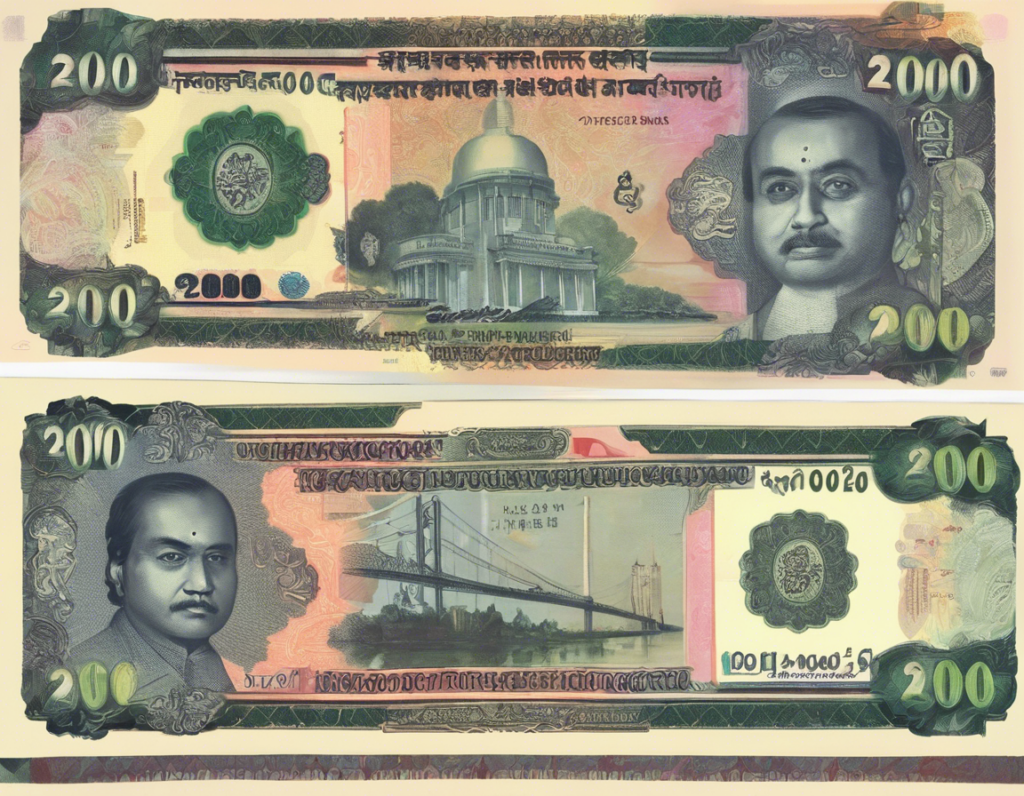In November 2016, India witnessed a significant and unprecedented event in its financial history – the demonetization of Rs 500 and Rs 1000 currency notes by the government. This move aimed to target black money, corruption, and counterfeit currency circulating in the economy. Alongside the demonetization, the government introduced a new currency note denomination – the Rs 2000 note. This step was taken to ensure the smooth transition of the economy post-demonetization.
Understanding the Rs 2000 Note Demonetization
The introduction of the Rs 2000 note was part of the government’s strategy to replace the demonetized higher currency denominations swiftly. Let’s delve into the various aspects of the Rs 2000 note demonetization:
Why Rs 2000 Note?
- The Rs 2000 note was introduced to meet the immediate high-value currency requirements post-demonetization.
- It aimed to facilitate high-value transactions and reduce the inconvenience caused due to the sudden withdrawal of Rs 500 and Rs 1000 notes.
Salient Features of the Rs 2000 Note
- Colour and Design: The Rs 2000 note introduced a new colour scheme and design elements to distinguish it from the older denominations.
- Security Features: High-tech security features such as latent images, intaglio printing, and optically variable ink were incorporated to prevent counterfeiting.
- Size and Dimensions: The physical dimensions and size of the Rs 2000 note were different from the demonetized notes for easy identification.
Impact of Rs 2000 Note Demonetization
The demonetization and introduction of the Rs 2000 note had far-reaching implications on the economy, financial institutions, and the general public. Let’s explore the impact:
Positive Effects
- Reduction in Black Money: The move aimed to curb the circulation of unaccounted money in the economy, thereby promoting transparency.
- Encouraging Digital Payments: Demonetization led to a surge in digital transactions as cash became scarce, fostering a digital payment ecosystem.
- Boost to Banking: With people depositing old notes in banks, there was a significant rise in bank deposits, thereby improving the liquidity of banks.
Challenges Faced
- Cash Crunch: The scarcity of physical cash, especially lower denominations, led to long queues outside banks and ATMs, causing inconvenience to the public.
- Impact on Informal Sector: The informal economy, heavily reliant on cash transactions, faced disruptions, impacting livelihoods of many individuals.
Future of Rs 2000 Note
The Rs 2000 note, though introduced as a stop-gap arrangement post-demonetization, raised debates on its long-term utility and relevance. Some viewpoints suggest the phasing out of the Rs 2000 note to discourage hoarding of high-value currency and promote digital payments. However, the Reserve Bank of India continues to circulate and monitor the Rs 2000 note in the economy.
FAQs on the Rs 2000 Note Demonetization
- What was the main objective behind demonetization in India?
-
The main objective of demonetization was to curb black money, corruption, and counterfeit currency in the economy.
-
Why was the Rs 2000 note introduced alongside demonetization?
-
The Rs 2000 note was introduced to facilitate high-value transactions and ease the immediate cash crunch post-demonetization.
-
What are the security features of the Rs 2000 note?
-
The Rs 2000 note includes security features like latent images, intaglio printing, and optically variable ink to prevent counterfeiting.
-
Did demonetization and the Rs 2000 note impact digital payments in India?
-
Yes, demonetization led to a significant surge in digital transactions as cash became scarce, encouraging the adoption of digital payment modes.
-
Is the circulation of the Rs 2000 note being monitored by the Reserve Bank of India?
- Yes, the Reserve Bank of India continues to monitor the circulation and usage of the Rs 2000 note in the economy.
In conclusion, the demonetization of higher currency denominations in India, accompanied by the introduction of the Rs 2000 note, marked a significant juncture in the country’s financial landscape. While the move had its share of challenges, it also brought about positive changes in terms of transparency, digital adoption, and banking practices. The future of the Rs 2000 note remains a topic of interest, reflecting the evolving dynamics of currency management and economic reforms in India.
